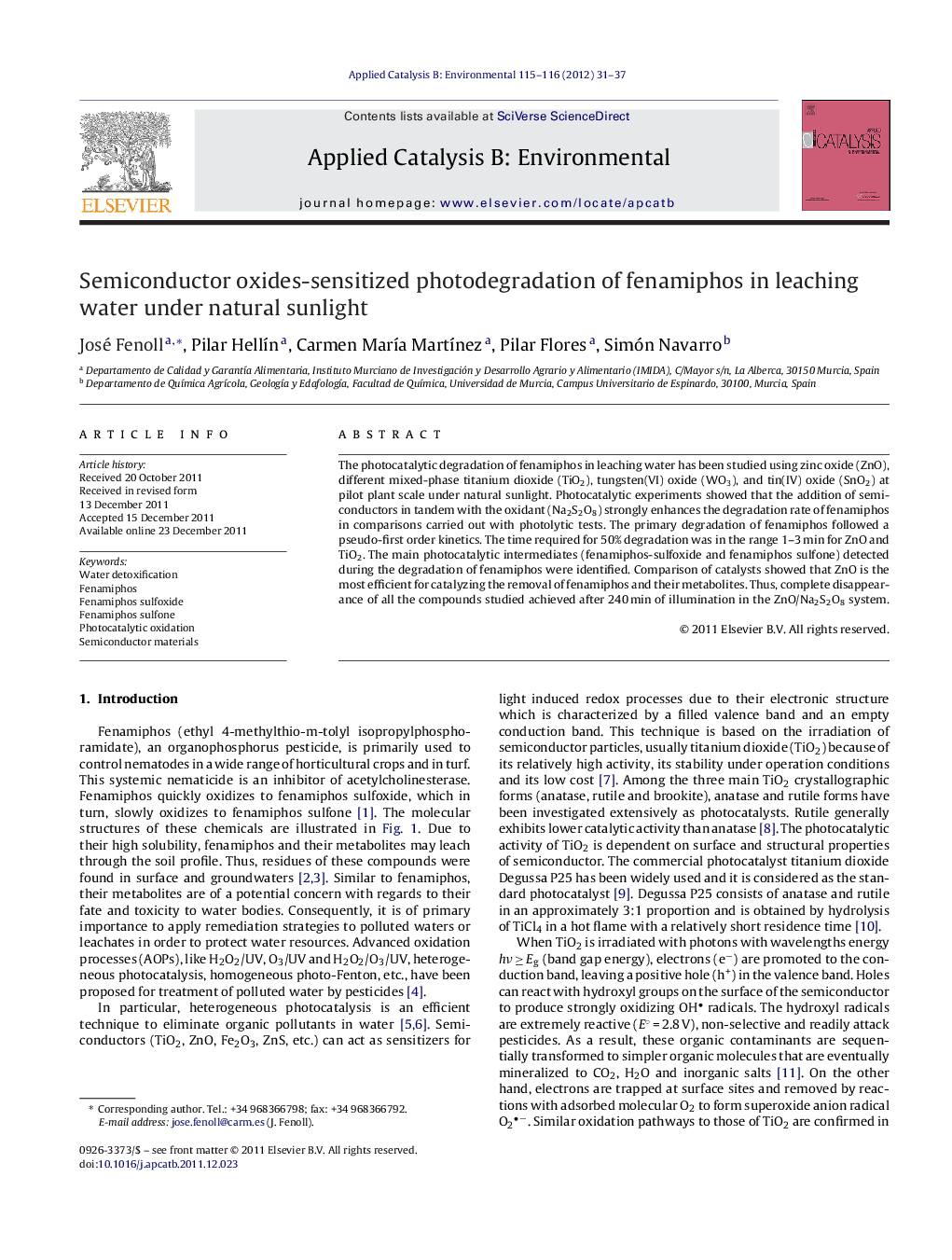| Article ID | Journal | Published Year | Pages | File Type |
|---|---|---|---|---|
| 46403 | Applied Catalysis B: Environmental | 2012 | 7 Pages |
The photocatalytic degradation of fenamiphos in leaching water has been studied using zinc oxide (ZnO), different mixed-phase titanium dioxide (TiO2), tungsten(VI) oxide (WO3), and tin(IV) oxide (SnO2) at pilot plant scale under natural sunlight. Photocatalytic experiments showed that the addition of semiconductors in tandem with the oxidant (Na2S2O8) strongly enhances the degradation rate of fenamiphos in comparisons carried out with photolytic tests. The primary degradation of fenamiphos followed a pseudo-first order kinetics. The time required for 50% degradation was in the range 1–3 min for ZnO and TiO2. The main photocatalytic intermediates (fenamiphos-sulfoxide and fenamiphos sulfone) detected during the degradation of fenamiphos were identified. Comparison of catalysts showed that ZnO is the most efficient for catalyzing the removal of fenamiphos and their metabolites. Thus, complete disappearance of all the compounds studied achieved after 240 min of illumination in the ZnO/Na2S2O8 system.
Graphical abstractPhotocatalytic degradation of fenamiphos in leaching water by using semiconductor oxides. ZnO was the most efficient for catalyzing the removal of fenamiphos and its metabolites. Total degradation of fenamiphos derivatives was achieved for the tandem ZnO/Na2S2O8.Figure optionsDownload full-size imageDownload as PowerPoint slideHighlights► Heterogeneous photocatalytic oxidation of fenamiphos in water. ► ZnO and TiO2 strongly enhanced photodegradation in comparison with WO3 and SnO2. ► Half-lives for fenamiphos in the presence of ZnO and TiO2 were about 1–3 min. ► Complete disappearance of fenamiphos metabolites was achieved only in the presence of ZnO.
